Jupiter reaches opposition on June 10, 2019
And with it, the largest planet in our solar system and its iconic Great Red Spot present us with a key mystery.

Jupiter reaches opposition for 2019 on June 10th. For an outer planet with an orbit exterior to the Earth, opposition simply means it’s ‘opposite’ to the Sun as seen from our Earthly vantage point. This means that Jupiter will rise in the east and dominate the sky throughout the June night, after the Sun sets in the west.
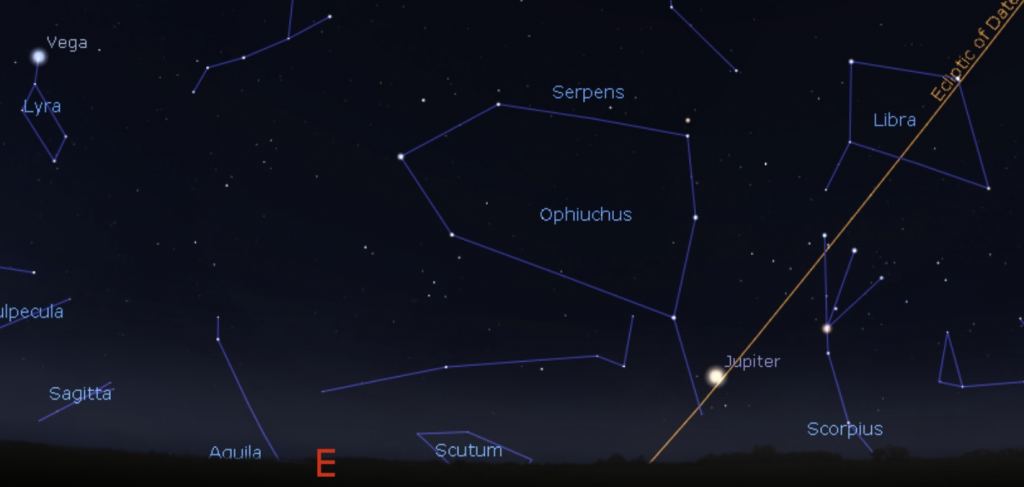
The precise moment of opposition in Right Ascension (that is, when Jupiter is 12 hours of R.A. from the Sun) occurs tomorrow, June 10, 2019, at ~15:00 UT/11:00 AM EDT. Jove is coming off of aphelion in February 2017, meaning that we’re currently in a cycle of slightly more favorable oppositions over the next few years. Still, Jupiter is 641 million kilometers from the Earth during opposition in 2019, only a bit less (53 million kilometers) than average.
Now, for the bad news, at least for folks up north. A June opposition also means that Jupiter is currently meandering through the constellation Ophiuchus the Serpent Bearer in 2019, staying ‘in the weeds’ to the south for folks up north near local midnight, but riding high in the sky near the zenith down south. The very best portion of the atmosphere to peer through is always straight up as it’s the thinnest, while low to the horizon nearly always affords a murky view.
The Path of Jupiter in 2019
Orbiting the Sun once every 11 years, oppositions for Jupiter are roughly 399 days apart, and move forward roughly one calendar month and one zodiacal constellation per year.
Jupiter at the eyepiece: Near opposition in 2019, Jupiter dazzles the eye at magnitude -2.6, brighter than any star in the sky. Even a small pair of hunting binoculars will easily tease out the four Galilean moons of Io, Europa, Ganymede and Callisto… we can be thankful that Galileo’s suggestion of calling them the ‘Medicean Moons’ after his benefactors, the Florentine Medici family didn’t stick. Crank up the magnification, and you’ll note features such as the northern and southern equatorial belts, and the Great Red Spot. Jupiter rotates so fast (once every 10 hours) that an observer can track the planet through one full rotation in a single sleepless evening near opposition. Jupiter is a place where things are really happening, and the view can change from one night to the next.
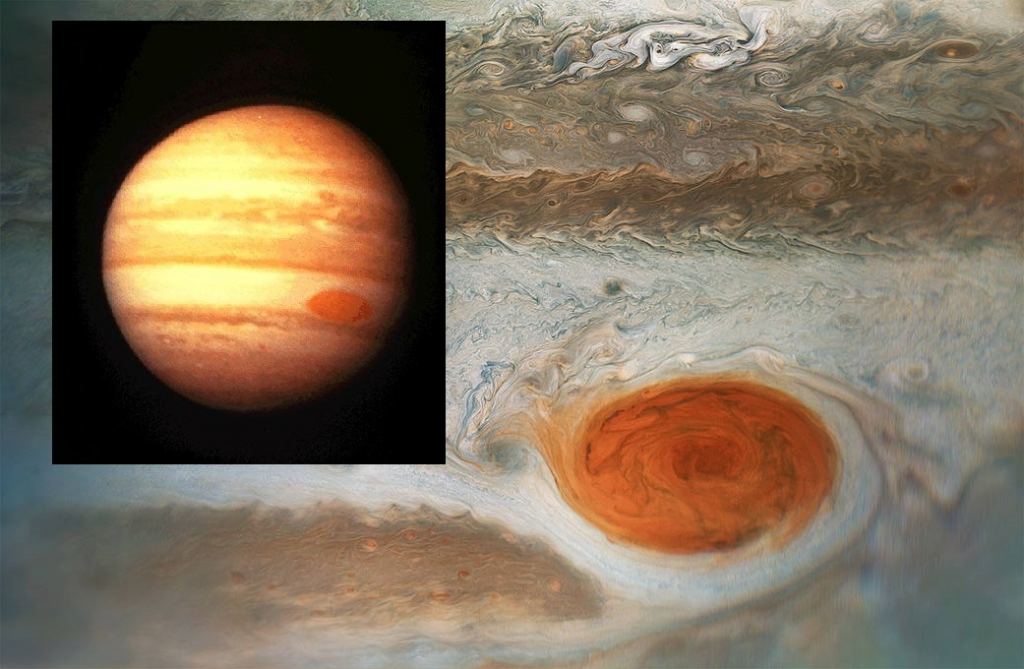
In June 2019, Jupiter’s disk swells to 46 arc seconds across. Only Venus can present a bigger planetary disk as seen from the Earth.
What’s up with the Great Red Spot?
This iconic feature has adorned Jovian cloud tops at least since it was first noted by Giovanni Cassini starting 1665, and it’s perhaps much older. 16,350 kilometers across its longest axis, you could slip the Earth into the eye of this storm, with room to spare. In the 20th century, the crimson cyclone lived up to its name; in the 21st century, however, the ‘Great’ Red Spot has been anything but, shrinking and fading in size. To our eye, the Spot has appeared more of a pinkish salmon than truly red in recent years… amateurs have even documented great sheets flaking off of the shrinking Spot this season.
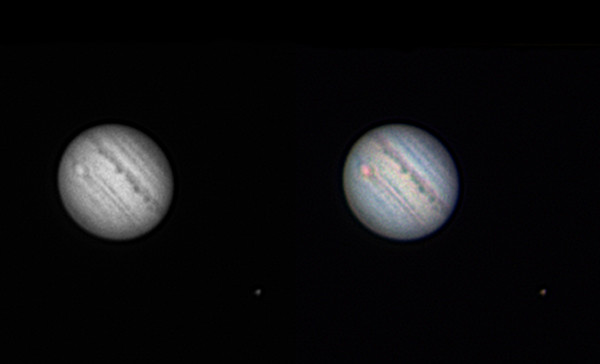
Could the Great Red Spot vanish entirely?
Losing such a recognizable symbol of Jupiter would be like Mars losing its pole caps, or Saturn losing its rings. Certainly, elementary school kids will keep dappling a red cherry oval on Jove… but viewing the gas giant just wouldn’t be the same.
And we don’t even quite understand why the Great Red Spot is so persistent. Ironically, it’s embedded in the Southern Equatorial Belt, which, unlike its permanent twin the Northern Equatorial Belt, pulls a vanishing act roughly every decade or so. Looking at recent astrophotos, this disappearance may be underway in 2019, as well. The Southern Equatorial Belt last vanished in 2010.
Other important dates
The moons of Jupiter are always fun to follow, as they alternately cast shadows on the Jovian cloudtops, and vanish behind the giant planet. Near opposition, Jupiter and its moons cast shadows nearly straight behind them as seen from our perspective, while near quadrature 90 degrees from the Sun, they cast shadows off to one side. With a little practice, you can start to recognize which moon is casting a shadow, from the tiny, inky black dot of innermost Io, to the dusky gray patch on Callisto.
In 2019, Jupiter reaches quadrature on September 9th. The orbits of Jupiter’s moons are also slightly inclined from our perspective, meaning that outermost Callisto ‘misses’ Jove on some years, such as most of 2019. Callisto resumes casting its shadow on Jove starting on October 15th, 2019.
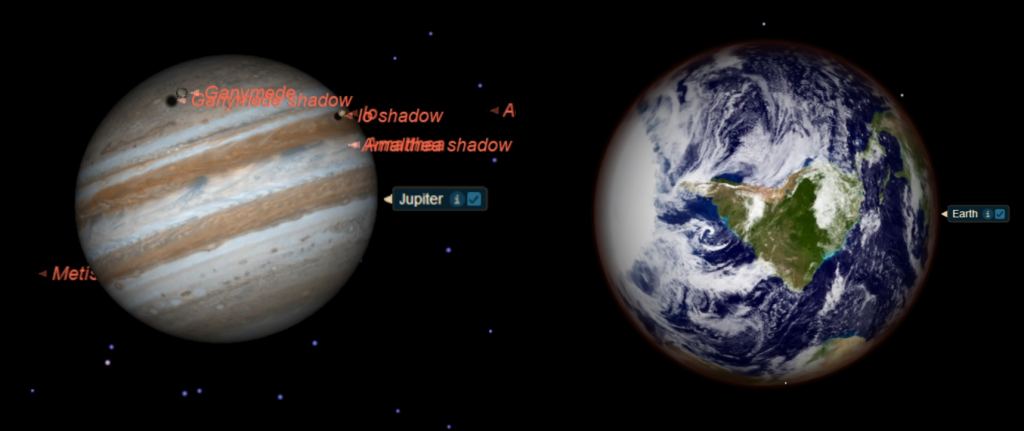
Other red letter dates for opposition 2019 include the double shadow transit of Io and Ganymede on June 12th, 2019, and the occultation of Jupiter by the thin waxing crescent Moon favoring central Asia on November 28th, 2019.
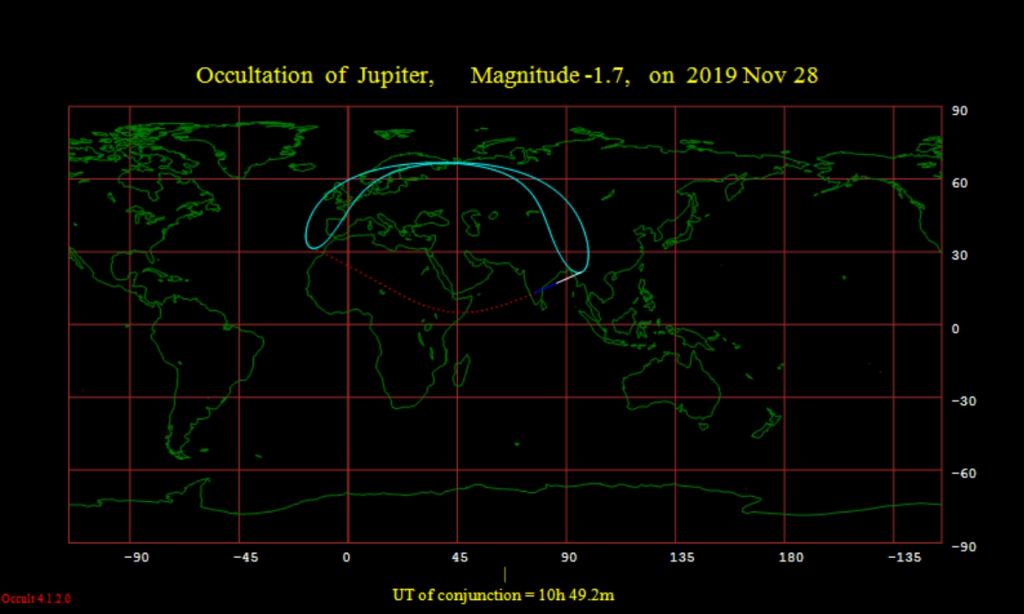
Don’t miss a chance to check out the largest planet in the solar system this summer, coming to a sky near you.












